Lory Widmer Hess's Blog, page 6
July 27, 2024
Olympic Book Tag
I’m back from break with a fun event from It Starts at Midnight – the Olympic Book Tag! Though personally I would be more into a Bookolympics, it’s hard to avoid getting somewhat excited about the Games, especially when they are happening in the country next door. And it was irresistible to take on the challenge of plugging some of my reading from this year into the various categories.
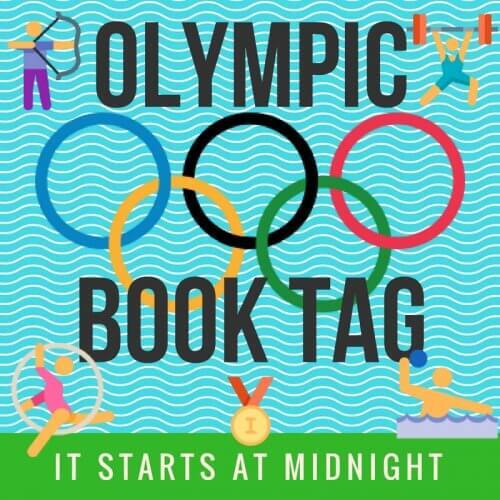
This year I had the particular pleasure of getting to see the Olympic Torch while I was on a visit to Chartres, France. It just happened to be passed from one bearer to another right in front of the apartment building where I was staying!
It’s quite a parade. First to approach were trucks selling Olympic merchandise, then several buses full of torch bearers — there are about 12 people listed for the Chartres stage alone, and I guess dozens of them must tag along for at least part of the whole journey.
Then, more vehicles, and police on motorcycles and a man in a white suit appeared. He spent some time practicing the “pass” with a police officer, and both posed for photos.
Finally, the woman carrying the torch jogged into view, with a crowd of people and more vehicles following behind her. The passing occurred, and the man ran onward toward the Hippodrome where an official ceremony would take place. (Sadly, I was not able to figure out who these two particular people were.)






Anyway, I’m glad I happened to be there for that particular moment, and I hope you enjoyed seeing these photos.
And now, on to the books!

 Actor and director Sarah Polley’s memoir-in-essays of a life fraught with danger had me gripped from page one.
Actor and director Sarah Polley’s memoir-in-essays of a life fraught with danger had me gripped from page one.

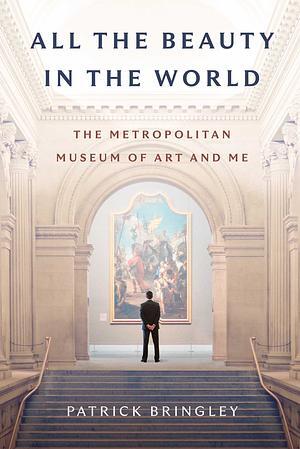 You can’t get much richer in culture than the Met. This memoir by a former museum guard reminded me to stop and look more closely at what’s around me.
You can’t get much richer in culture than the Met. This memoir by a former museum guard reminded me to stop and look more closely at what’s around me.
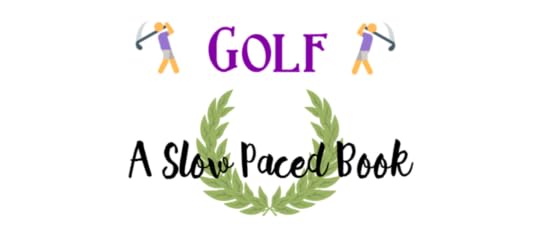
 I am reading Madame Bovary as part of my personal “Summer in Other Languages” challenge, aiming to finish within three months. It’s very slow going for me in the original French, but it’s also hard to motivate myself to read such a sad and painful story. Nevertheless, I shall persist…
I am reading Madame Bovary as part of my personal “Summer in Other Languages” challenge, aiming to finish within three months. It’s very slow going for me in the original French, but it’s also hard to motivate myself to read such a sad and painful story. Nevertheless, I shall persist…

 Not exactly sobbing, but I shed a happy tear or two at the conclusion of Eva Ibbotson’s wonderfully satisfying romance set in a pre-war opera company in Austria.
Not exactly sobbing, but I shed a happy tear or two at the conclusion of Eva Ibbotson’s wonderfully satisfying romance set in a pre-war opera company in Austria.

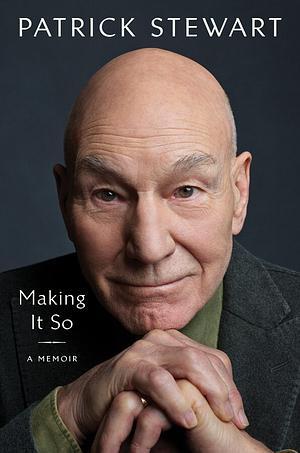 I thought Patrick Stewart’s memoir of his life on stage and screen was a solid winner, and not just for fans of Star Trek.
I thought Patrick Stewart’s memoir of his life on stage and screen was a solid winner, and not just for fans of Star Trek.

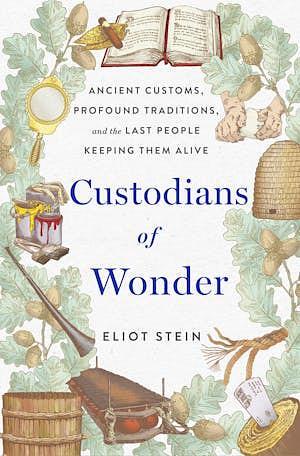 This book won’t be out till December, but it’s worth watching for if you’re interested in exploring fascinating, vanishing customs from around the world.
This book won’t be out till December, but it’s worth watching for if you’re interested in exploring fascinating, vanishing customs from around the world.

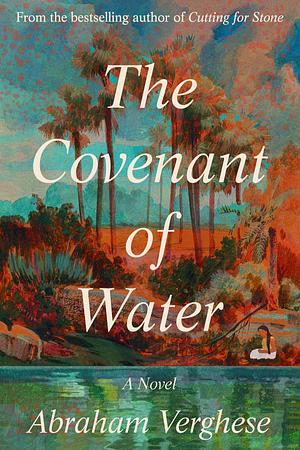 I think this is the longest book I’ve read this year, but with its multi-generational saga of a family affected by a medical mystery in India, it flew by.
I think this is the longest book I’ve read this year, but with its multi-generational saga of a family affected by a medical mystery in India, it flew by.

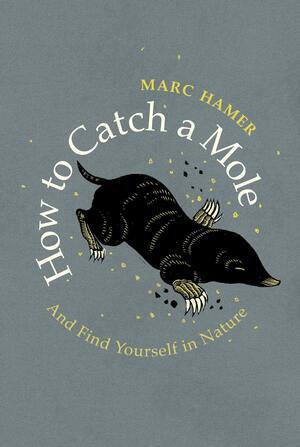 A book that literally delves underground to reveal the weird and secret lives of moles, as well as the people who work as mole catchers.
A book that literally delves underground to reveal the weird and secret lives of moles, as well as the people who work as mole catchers.

 A lovely book about a marriage that’s been tested by tragedy, written in short mini-essays.
A lovely book about a marriage that’s been tested by tragedy, written in short mini-essays.

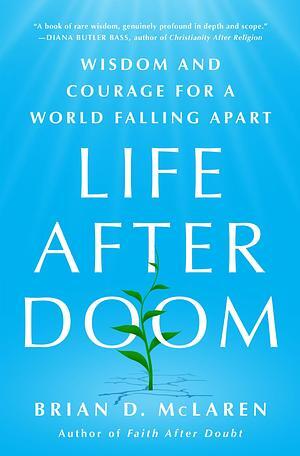 The future is scary, but Brian McLaren helped me to see the kind of courage and love we need to get through it and retain our humanity.
The future is scary, but Brian McLaren helped me to see the kind of courage and love we need to get through it and retain our humanity.
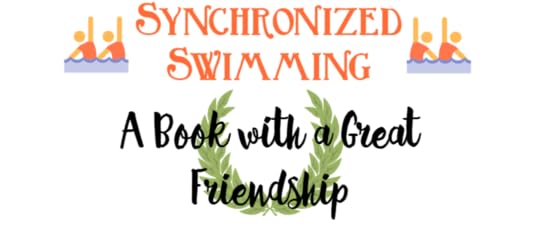
 An unusual friendship is at the heart of this very sweet Japanese novel about overcoming prejudice and celebrating life.
An unusual friendship is at the heart of this very sweet Japanese novel about overcoming prejudice and celebrating life.

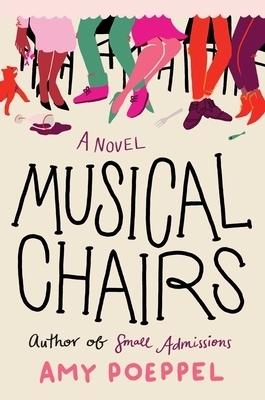 A romantic comedy in which a professional cellist finds her life changed through one eventful summer in the country.
A romantic comedy in which a professional cellist finds her life changed through one eventful summer in the country.

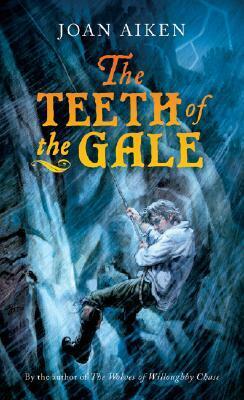 The finale of Joan Aiken’s Felix Brooke trilogy, each of which contains at least one doozy of a twist.
The finale of Joan Aiken’s Felix Brooke trilogy, each of which contains at least one doozy of a twist.

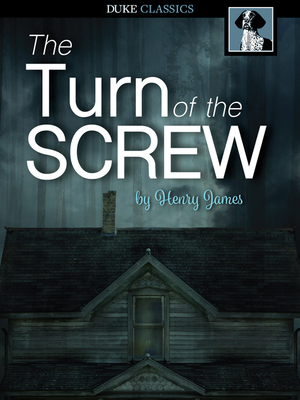 As consolation, I don’t think anybody can say for sure what really happened in Henry James’s classic ghost story.
As consolation, I don’t think anybody can say for sure what really happened in Henry James’s classic ghost story.
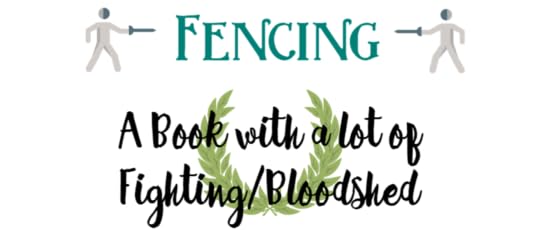
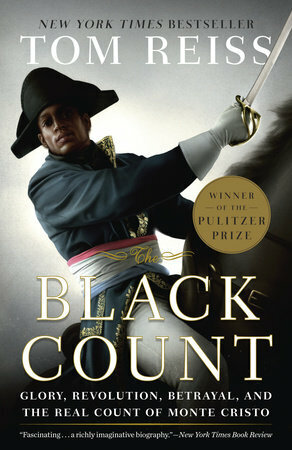 A hero of the French Revolution would encounter a lot of fighting, but most interestingly, this book is also about the fight for racial equality.
A hero of the French Revolution would encounter a lot of fighting, but most interestingly, this book is also about the fight for racial equality.
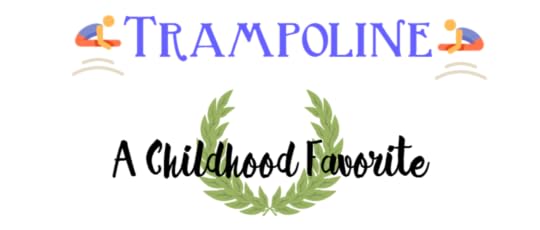
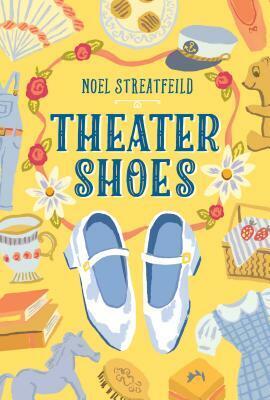 Though the ending was a bit weak, I always enjoy revisiting the world of dance and theatre with Noel Streatfeild.
Though the ending was a bit weak, I always enjoy revisiting the world of dance and theatre with Noel Streatfeild.

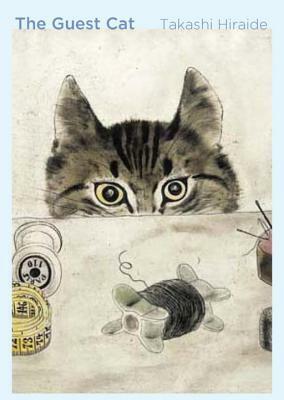 I failed to detect the charm in this Japanese novella.
I failed to detect the charm in this Japanese novella.

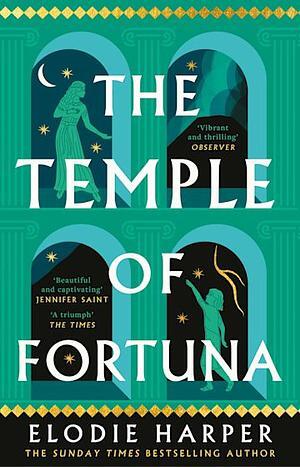 The main character in this trilogy set in ancient Pompeii is a courtesan torn between maintaining security through her patron and finding happiness with the slave she truly loves. In the final volume, the situation comes to a crisis, assisted by the eruption of Vesuvius.
The main character in this trilogy set in ancient Pompeii is a courtesan torn between maintaining security through her patron and finding happiness with the slave she truly loves. In the final volume, the situation comes to a crisis, assisted by the eruption of Vesuvius.

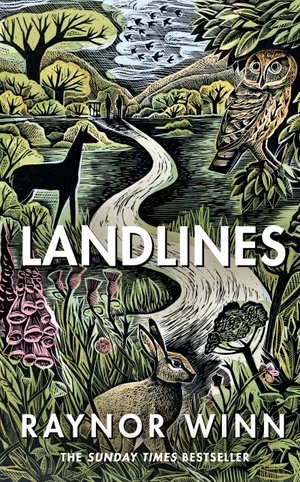 Following The Salt Path and The Wild Silence, Raynor Winn and her husband set out on another epic journey, walking from Scotland back to their home in Cornwall.
Following The Salt Path and The Wild Silence, Raynor Winn and her husband set out on another epic journey, walking from Scotland back to their home in Cornwall.

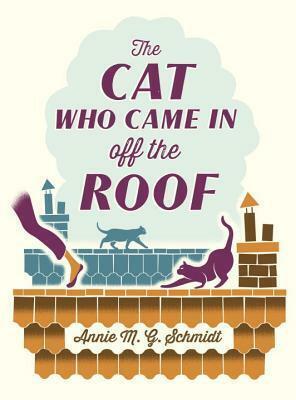 This fun children’s story is centered around a cat who mysteriously turns into a woman.
This fun children’s story is centered around a cat who mysteriously turns into a woman.

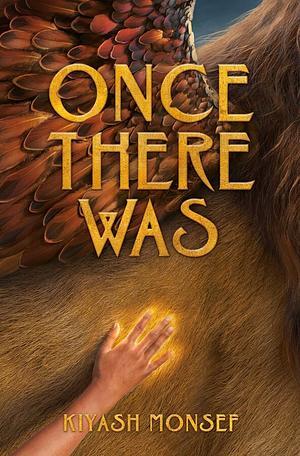 I loved all parts of Kiyash Monsef’s debut fantasy, but found the ending particularly poignant.
I loved all parts of Kiyash Monsef’s debut fantasy, but found the ending particularly poignant.

 A champion figure skater whose career faltered under pressure exposes some of the unhealthy dark side behind the excitement and glamour of one of my favorite Olympic sports.Thank you Shannon for organizing the event!
A champion figure skater whose career faltered under pressure exposes some of the unhealthy dark side behind the excitement and glamour of one of my favorite Olympic sports.Thank you Shannon for organizing the event! What would you choose for some of these prompts?
July 13, 2024
Near Paris in July – My trip to Chartres
Hello! In the midst of my blog break, I wanted to post a few photos from my amazing week in Chartres, France, before Paris in July (#2024parisinjuly) passes us by.
We explored the beautiful gothic cathedral from top to bottom, taking all available tours including of the roof and the crypt, spent hours gazing at the windows, sculpture, and architecture, saw it lighted up at night, bought books to help us puzzle out the mysterious iconography, attended High Mass, and walked the ancient labyrinth three times.
I was most intrigued by the North Portal, an incredibly detailed assemblage of sculptures of Old Testament and allegorical figures, from the creation of the world onward, leading to the birth of Mary, the Annunciation and Nativity. Sadly, the transept on this side was completely closed off, so we’ll have to come back in a couple of years when the whole cathedral will hopefully be open again.
Though most of my time was spent at the cathedral, I also saw another quite different construction at the Maison Picassiette, a house covered with mosaic by one man over the course of 33 years. It’s definitely worth a visit too if you’re in the area.
My stomach behaved well enough to let me enjoy some delicious French food. And I even saw the Olympic torch being passed — not something I would have gone out of my way to see, but it happened right outside our Airbnb apartment!
If you have not been to Chartres, I hope this might inspire you to make the pilgrimage. It’s worth going for more than just a day trip.
 Bridge over the Eure
Bridge over the Eure A charming street sign on the Street of Frogs
A charming street sign on the Street of Frogs The West Front
The West Front Photos cannot do justice to the beauty of the windows…
Photos cannot do justice to the beauty of the windows… The South Rose Window (the north was under reconstruction, sadly)
The South Rose Window (the north was under reconstruction, sadly) Gabriel and Mary
Gabriel and Mary A mysterious female figure on the North Portal … is she Judith, Joseph’s wife, or a Jewish sibyl?
A mysterious female figure on the North Portal … is she Judith, Joseph’s wife, or a Jewish sibyl? A new statue?
A new statue? A funny frog face hidden in a column on the North Portal
A funny frog face hidden in a column on the North Portal Part of the light show done every night (North portal of the cathedral)
Part of the light show done every night (North portal of the cathedral) From the Maison Piccassiette, a house covered with amazing mosaics
From the Maison Piccassiette, a house covered with amazing mosaics Kitchen at Piccassiette
Kitchen at Piccassiette Another mosaic doorway in the garden
Another mosaic doorway in the garden The Olympic torch was passed on right in front of our apartment!
The Olympic torch was passed on right in front of our apartment! Pastry counter at Feuillette
Pastry counter at Feuillette A delicious bistro meal
A delicious bistro meal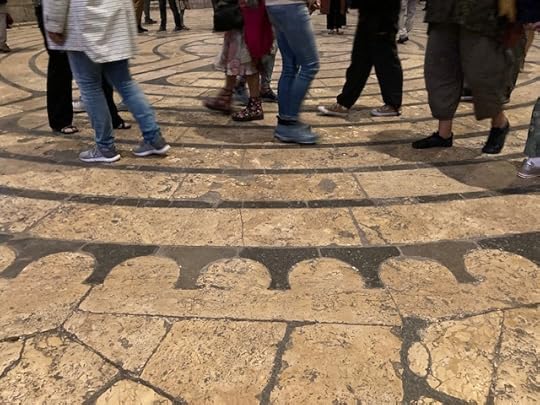 Walking the labyrinth
Walking the labyrinth
June 30, 2024
Month in Review: June 2024
It’s hard to believe the end of June is upon us already! I am going to take a break in July, as I have some exciting travel planned (see below) and just need unstructured time in the summer. But I’ll be back in another month if not sooner.
I enjoyed everything I read this month. There were some wonderful nonfiction reads, including one about a famous library cat for Reading the Meow; the continuation of the Ozathon; and exploring a new-to-me series by Joan Aiken in preparation for a post I’m writing for Witch Week, coming in October. I’ve been in touch with Joan Aiken’s daughter, Lizza, and will be sharing some fascinating background information as well as my personal appreciation of this adventurous trilogy.
Dewey by Vicki Myron – Reading the Meow, Nonfiction reader, pets categoryCustodians of Wonder by Eliot Stein – Review to come (December release) The Patchwork Girl of Oz by L. Frank Baum – OzathonThe Cat Who Came in Off the Roof by Annie M.G. SchmidtGo Saddle the Sea, Bridle the Wind, and The Teeth of the Gale by Joan Aiken – review to come, for Witch WeekThe Gift Giving by Joan AikenAll the Beauty in the World by Patrick Bringley – Nonfiction Reader, culture category Language
LanguageI took a German test this week to see if I’d qualify for a caregiving training I am thinking of taking. I have never taken an official course in this language, so I didn’t know what level I might have achieved. I think my ability to converse and to write have improved dramatically over the past couple of years, but I still feel shaky with grammar (those pesky German cases). Fortunately, that didn’t prevent me from passing the B1 level test. I’m glad to know I’ve made it at least this far.
I have continued to make progress with Momo in German and Madame Bovary in French. Though the two books could hardly be more different in many ways, they are each structured in three parts. My goal is to finish one part of each book per month, and so far I’m keeping up.
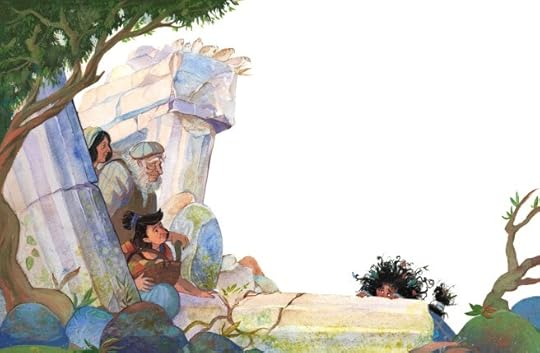 Illustration by Anastasia Bezgubova from MomoLife
Illustration by Anastasia Bezgubova from MomoLifeMy husband and son are currently on a backpacking trip along the coast of Brittany. They started at Mont St. Michel and are heading toward St Malo. They are having a good time, but lugging a heavy backpack and sleeping in a tent is not my cup of tea. I’m going to drive over next week and meet up with them in Chartres (about an hour from Paris, in central France). I am looking forward to a peaceful week exploring the cathedral and relaxing. However, I would like to visit the coast someday!
Are you traveling anywhere this summer? Or what would your dream destination be?
 Photo by Matt Hardy on Pexels.com
Photo by Matt Hardy on Pexels.comLinked at The Sunday Post at Caffeinated Book Reviewer, the Sunday Salon at Readerbuzz, and the Monthly Wrap-up Round-up at Feed Your Fiction Addiction
June 16, 2024
#Ozathon24: A colorful new character
In The Patchwork Girl of Oz, another animated character is added to the roster of inanimate objects brought to life in Oz: the Patchwork Girl, created out of a crazy quilt to be a servant to a magician’s wife. “Scraps” resists that dreary fate, though. Due to the intervention of a boy named Ojo, she’s been gifted with an assortment of qualities not desirable in servants: she’s independent, imaginative, and maybe a bit crazy. Scraps loves to be active, sings ridiculous songs, and proclaims “I hate dignity!” She’s basically the exact opposite of the feminine ideal of the time.
Scraps enlivens the basic quest narrative of the book, which takes Ojo on a journey through Oz looking for ingredients for a potion to save his Unc Nunkie, turned into stone through a magical accident. Though this book is marred by a couple of examples of racial stereotyping (very much of their time), on the other hand, the celebration of Scraps’ liberation from servitude seems to make a comment on the injustice of slavery, as well as on the limiting social expectations of women.
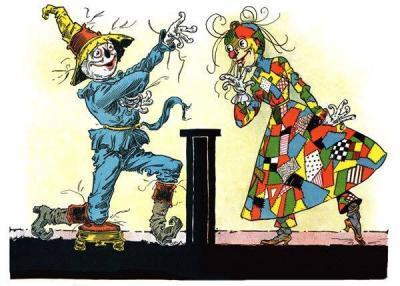 Scraps meets the Scarecrow
Scraps meets the ScarecrowThe notion of affecting people’s capabilities and personalities by giving them “brains” is a recurring theme in the series. And this has undergone some changes. In the first book the idea of “brain-substance” was treated as an absurdity — the Wizard only pretends to give the Scarecrow brains because he demands a material symbol for his intelligence, unable to believe it exists otherwise. But his ability to think actually appears to be innate and not connected to matter in his head.
By this book, the manipulation of brain-substance is an accepted fact, and brains can be a liability as well as an advantage. While the Patchwork Girl’s wild and unconventional nature is mostly accepted by the other characters, another animated creature, the Glass Cat, is so annoying with her constant talk about her pink brains (“you can see ’em work!”) that she ends up having them forcibly replaced at the end, to make her more docile and less vain.
 A dance version of the story from LA Choreographers and Dancers
A dance version of the story from LA Choreographers and Dancers This is not the only morally questionable event in the Oz books; in her reread series on the Tor.com blog, Mari Ness has done an amusing job of tracking many incidents of “Ozma fail.” Ozma is continually eulogized as a wonderful ruler, but she is also an authoritarian who tells people what they can and can’t do. She picks favorites who get to be exempt from her rules (the Shaggy Man, for example, doesn’t have to do any work), arbitrarily ignores her own strictures at times (Ojo is jailed for thievery, while said Shaggy Man, an unrepentant thief, was accepted into Oz), and neglects to reveal important information (Ojo’s theft would not have happened if Ozma had bothered to explain the reason for the law forbidding it).
But never mind! What seems to keep the people of Oz from resisting Ozma’s authority is that the general goal of her authority is to meet everyone’s needs, with intentions that are kind if not always consistently worked out. Ojo’s jail is not a dank cell but a cozy home where a motherly wardress feeds him and plays with him. The idea is that anyone who has done something wrong in Oz — an exceedingly rare occurrence — is to be pitied and given the comforts they must be lacking, in order to do such a thing. I liked this idea as a child, and I still think there’s something to be said for that theory, although it’s not so easy as Baum makes it sound.
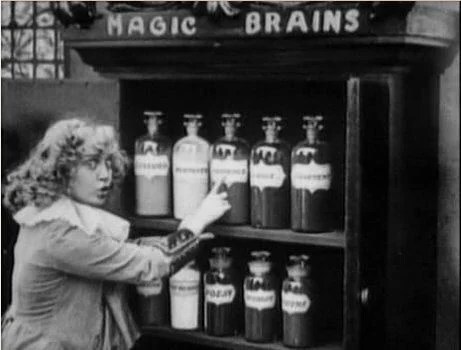 Baum, who moved to Hollywood in midlife, kept trying to turn Oz into a movie business (though he always ended up losing money). This still is from the 1914 film of The Patchwork Girl of Oz.
Baum, who moved to Hollywood in midlife, kept trying to turn Oz into a movie business (though he always ended up losing money). This still is from the 1914 film of The Patchwork Girl of Oz.American-style, Baum’s notion of what people need is on the materialistic side — all marble bathtubs, jewelled ornaments and silk and velvet outfits — but the outer splendor and luxury can be taken as a metaphor for inner wealth. In Oz, everyone has an equal right to possess these riches, and a responsibility to share them, a rather radical notion for the time. Just don’t do magic without Ozma’s permission…
June 11, 2024
#ReadingTheMeow2024: Dewey, the Small-Town Library Cat Who Touched the World
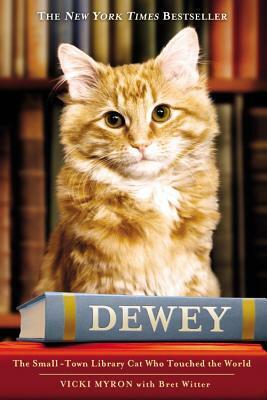
Mallika of Literary Potpourri invites us to read and discuss books with cats in them this week, and after some unsuccessful attempts to find one — disappointed by books with not enough feline presence or too dull or unpleasant to make me want to finish or share them with you — I came across this charming true-life story.
Dewey was dumped as a kitten in the library book drop in Spencer, Iowa, rescued by the librarians and dubbed the library cat. Over the years he became a beloved presence for many (though not all) town residents, and began to attract attention from national and even worldwide press. By the time he died, he had become a legend, and the library is still visited by those seeking to commune with Dewey — though the library board has since made a no-cat rule, Dewey’s spirit lives on.
What was so special about Dewey? In the account of Vicki Myron, former head librarian and “Dewey’s mom,” he seems to have had an unusual degree of intuition regarding people and their needs. He greeted her every single day as she arrived at the library. She insists that he could tell when she or other people were in emotional trouble and offered them comfort with his playfulness or willingness to be quietly patted. He loved to explore the library, making perilous trips all the way to the ceiling, but was never destructive. In one story his strange behavior turned out to have been a warning about an intruder. He was alert, responsive, and apparently aware that he had an important job to do.
Interwoven with Dewey’s growth into the role of official library cat is the story of a small Iowa town, fallen on hard times in the farm crisis of the 80s, and of Vicki Myron herself, who went through many relational and health challenges. For Vicki and for the town, Dewey often brought a sense of life and hope when things were going downhill. Some reader reviews of the book complain that there was too much of this other information and not enough cat stories, but I disagree. Dewey was a community cat, not just a solitary personality, and it was necessary to fill out the story of his “people.”
Vicki was the most important person in his life, and it was also worthwhile to learn something about her and her struggles, to explain the joy she derived from this special animal friendship. Her writing (assisted by co-author Bret Witter) is not remarkable in a literary sense, but it’s heartfelt and honest and certainly brought Dewey to life for me.
Though he couldn’t read books, Dewey was a “reader” of people. He had a sense of what people needed and appeared happy to deliver it to them, just as people enter a library with many needs that the librarians try to serve as best they can. His curiosity, love of exploration, and alert responsiveness represent what we humans ought to bring into our quest for learning and growth. Surely any library could benefit from having a cat like that, to remind us what we’re there for.
Vicki Myron and Bret Witter, Dewey: The Small-Town Library Cat Who Touched the World (Grand Central 2008)
Also counted for Nonfiction Reader Challenge, Pets category
June 8, 2024
Nonfiction Reader: American Nations
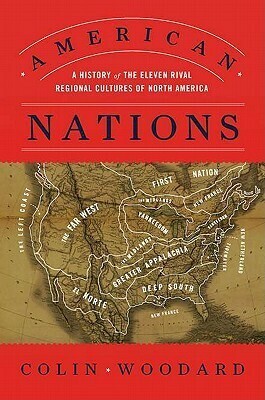
What causes the United States of America to be so internally fractious and thoroughly disunited? The federal government is grinding to a halt, as opposing factions battle to wrest control of it for their own, deeply opposite agendas. Why is no one interested in getting along so that things can work better?
Well, now I don’t need to wonder: this is just the way it’s been from the beginning. In his sweeping overview of the course of European settlement of the area that became the United States, American Nations, Colin Woodard identifies eleven distinct cultural entities — crossing state and even official national borders — that played a part in shaping US history, and still persist to a remarkable extent. These remain and must be reckoned with, as becomes clear every time a US election hangs upon them.
The main rivals are the Yankees in the northeast and the Deep South in the southeast. Yankees are characterized as community-oriented, proselytizing fanatics who want to assimilate the different, creating a better world according to their own idea of what that means. The Deep Southerners are portrayed as individual-oriented elitists, who want to enslave the different and create a better world for themselves by keeping everyone else in their proper place, while exploiting the natural world. Buffering these extremes and sometimes acting as glue are the idealistic tolerance of the Midlands (seeded by Quakers), the materialistic tolerance of New Netherland (seeded by the Dutch), the opportunist, side-switching Greater Appalachia (seeded by fierce fighters from the Scots borders), and the feudal society of Tidewater (seeded by English aristocrats).
Along with the even earlier Spanish- and French-seeded settlements (given the names El Norte and New France), these have been the main players in political battles over the course of the last few hundred years. The Yankees and the Deep Southerners simply have irreconcilable philosophical differences about what it means to be a human being in society — demonstrated by their having supported different sides in the European religious wars, the English Civil War and even the Revolutionary War. Neither has enough power to rule the continent on their own, so there has been a constant struggle to conquer more territory as the country spread west, and to sway the “swing” regions to their influence.
This is broad-brush history, and although there are some fascinating and little-known details included that support Woodard’s thesis, other important events and issues are given short shrift or omitted. The regional characterizations may also be perceived as simplistic and unfair, as they certainly are to some inhabitants of the “nations”. While the Yankees’ moral crusading is not very palatable, when taken to its intolerant extreme, the Deep South elite really get the harshest treatment: they still consider slavery a positive good, certainly for people of color, but also, if it were possible, for low-caste white people. “Liberty” is meant for them, not for the lower orders of humanity. Their culture was imported from the deadly sugar plantations of Barbados, and they are still fighting to preserve it, at least in Woodard’s description.
Despite the drawback of oversimplification, the book helped me to see past the rah-rah myth of American origins taught in public schools, and to understand some of my own blind spots — my own tribe is certainly Yankee, and it’s the only one I really know well, though I lived in New England for only a few years of my life. (Instead, I’ve lived in the Yankee-influenced areas of the “Left Coast,” as well as the upper midwest and upstate New York.) Most illuminating for me was the distinction between seeking the good of the community, which developed into “Public Protestantism” (an increasingly secularized form of Puritanism), and seeking the good of the individual, which developed into “Private Protestantism” (the Bible-belt attitude that personal salvation is the thing and to hell with everyone else). Somehow, that made the nature of the differences clearer in a way I had not comprehended before.
It’s good to understand more, but increasingly it seems me that no reconciliation is possible between such sharply divided points of view, without a real catastrophe. It seems almost unbelievable that the ill-assorted federation has hung together for so long, and increasingly likely that it will fall apart. As demographics have shifted — including the steep increase of Hispanics in El Norte — and the Yankee-Deep South rift has only deepened into a left-right battle, what, if anything, can hold the country together? All too soon, we are set to find out.
Colin Woodard, American Nations: A History of the Eleven Rival Regional Cultures of North America (Viking, 2011)
Read for the Nonfiction Reader Challenge — History category
June 1, 2024
Month in Review: May 2024
This month, I reviewed April’s Reading the Theatre event and looked forward to my 10 Books of Summer plans. I kept up with my one book a month for the Ozathon (Emerald City) and read another book for the Nonfiction Reader Challenge, though I have yet to post about that one.
Otherwise, my reading was all over the place: comfort rereads, kooky mysteries, dark-tinged stories from a favorite fantasist, a visceral memoir of mental illness and relationship woes, one of the most baffling novellas in English literature, and more. Here’s the list:
 Magic Flutes by Eva Ibbotson – Reread
Everyone in My Family Has Killed Someone
and
Everyone on This Train Is a Suspect
by Benjamin Stevenson
The Emerald City of Oz
by L. Frank Baum – Reread, Ozathon
Buried Deep
by Naomi Novik
Heart Berries
by Terese Marie Mailhot
Jim Knopf und Lukas der Lokomotivführer
by Michael Ende
The Turn of the Screw
by Henry James
American Nations
by Colin Woodard – Nonfiction Reader, Review to come
The Guest Cat
by Takashi HaraideLanguage
Magic Flutes by Eva Ibbotson – Reread
Everyone in My Family Has Killed Someone
and
Everyone on This Train Is a Suspect
by Benjamin Stevenson
The Emerald City of Oz
by L. Frank Baum – Reread, Ozathon
Buried Deep
by Naomi Novik
Heart Berries
by Terese Marie Mailhot
Jim Knopf und Lukas der Lokomotivführer
by Michael Ende
The Turn of the Screw
by Henry James
American Nations
by Colin Woodard – Nonfiction Reader, Review to come
The Guest Cat
by Takashi HaraideLanguageThe Turn of the Screw is a book written in English, but upon first encountering it in college I found even more obscure than reading in another language. It was picked by an English student to read together, but I have not heard from her since, and hope it hasn’t put her off English literature altogether!
Upon rereading it, I still can’t parse all the sentences, but I gained more insight into this ghostly tale — which, like all the best ghost stories, appears to be about a haunted person, not just a spooky place. James has created a compelling but ultimately impossible to solve puzzle about how we store and process memory, capturing us within the mind of a narrator we can neither trust nor get away from. I’m glad I finally read it again and that it offered up a bit more of its secret.
Meanwhile, I keep plugging along with German and French — more the former, but that is soon to change with what has become an annual French Summer Book Club hosted by Emma of Words and Peace. This year we’re reading Madame Bovary, a request of mine as it’s another book I read in college and could get very little out of. The link to join our Discord discussion group is here — feel free to read along in translation if you wish. The discussion will be in French, but the level there will be much simpler than the book!
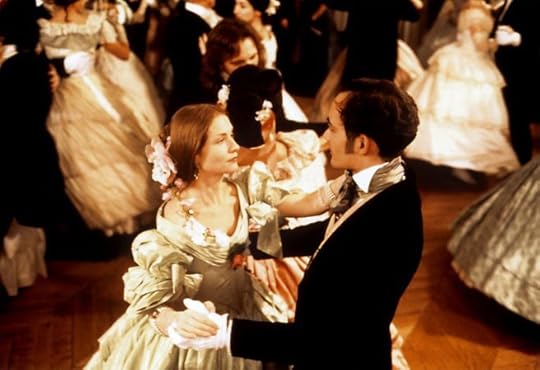 Madame Bovary, with Isabelle Huppert — from the 1991 film by Claude ChabrolLife
Madame Bovary, with Isabelle Huppert — from the 1991 film by Claude ChabrolLifeMy digestion has been up and down lately. After a scary bad migraine, I had a gastrocopy to check for a bleeding ulcer or other serious issue. I found that I don’t have that, but I do have a hiatal hernia (a very common condition where part of the stomach pokes up through the diaphragm, making it easier for acid to get into the esophagus.) Could that have been causing some of my problems? With this information, will I be able to take steps that improve my digestion and overall health?
Hoping that to be the case, I am hoping to get somewhere further afield during our July holiday — I don’t want to jinx the plans yet by sharing them, but will certainly do so if they work out. In the meantime, it’s mostly been a cold and rainy spring, though with some opportunities to enjoy the blooming season.
My favorite sheep have appeared by the roadside, where I walk daily as part of my work shift when weather permits … I think they are Valais Blacknose, also known as the world’s cutest sheep. When their fleece grows you can see why: it’s long and curly and makes them look adorable. Here they are taking a nap, and I can only aspire to be so relaxed.

Linked at The Sunday Post at Caffeinated Book Reviewer, the Sunday Salon at Readerbuzz, and the Monthly Wrap-up Round-up at Feed Your Fiction Addiction
#Ozathon24: The story continues
We’ve had six months of the Ozathon so far, and I’ve had a wonderful time revisiting these childhood favorites and reading your thoughts. I’d like to thank all who have participated so far, particularly my co-host, Deb of The Book Stop. Others include:
Howling Frog BooksStaircase WitPuss RebootsThe Book StopRosie AmberLiterary PotpourriThe Bookworm ChroniclesPages UnboundReaderbuzzIf I have left anyone out, please let me know and I’ll add you to the list.
From here on, Deb and I will not be doing extra introduction or wrap-up posts each month, but will continue to post about each book on our own blogs. We encourage you to do so as well, and to visit other participating blogs and join in discussion in the comments.
As a reminder, here are the remaining books in the series:
June, 2024: The Patchwork Girl of OzJuly, 2024: Tik-Tok of OzAugust, 2024: The Scarecrow of OzSeptember, 2024: Rinkitink in OzOctober, 2024: The Lost Princess of OzNovember, 2024: The Tin Woodman of OzDecember, 2024: The Magic of OzJanuary, 2025: Glinda of OzIf you haven’t yet caught up, or not even started, don’t worry! You can join in the Ozathon any time.
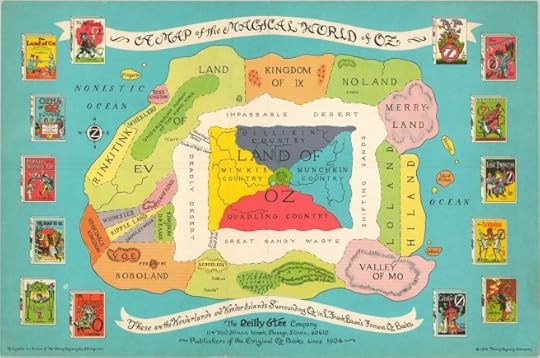
May 26, 2024
#Ozathon24: Farewell to Oz?
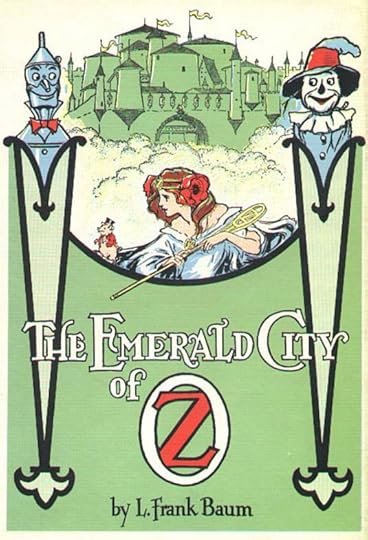
With the sixth Oz book, The Emerald City of Oz, L. Frank Baum did several things. He brought Dorothy, along with Aunt Em and Uncle Henry, to live permanently in Oz. This opened the way for him to close the Oz saga permanently, leaving all the characters we’d met so far happily ensconced there. To ensure that happy future, he’d also revised his notions about Oz, changing it from a wild land full of danger and deception into a utopian society ruled by a good fairy who managed everything wisely. No one ever dies in Oz, no one is allowed to practice bad magic, and everyone offers the products of their work for the good of others.
To me a child, that sounded wonderful; as an adult, it sounds like a nightmare of stasis. It’s a vision of Heaven, but a very illogical one. Billina the Yellow Hen, for example, continues to hatch chickens which are never harmed or used for food. The question of how, if she was originally the only hen in Oz, she managed to have fertile eggs in the first place, is not addressed, nor is the problem of overpopulation. Even if Oz is protected from invasion by the outside world, it’s soon going to be overrun by chickens. Meanwhile, it seems as though humans are arrested at their current age, remaining children or middle-aged or old forever.
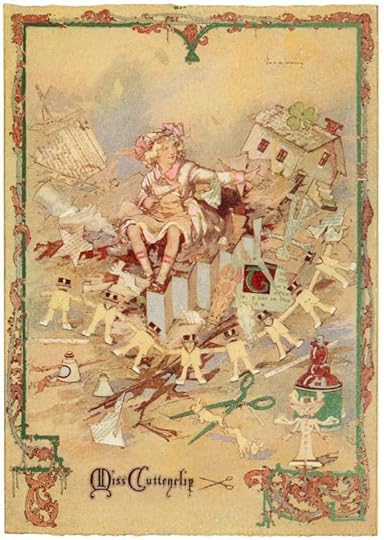 Beautiful color illustrations by John R. Neill
Beautiful color illustrations by John R. NeillThis doesn’t appeal to me any more; I now understand that without death, there can be no birth, no growth and development, and the latter is what gives life its purpose and meaning. But in wanting to banish the specter of death, which must have haunted him from childhood due to his diseased heart, Baum sidesteps this inconvenient truth. It’s lovely to think of everyone being happy and secure and free from care, but it’s only half of the story. The darker side has a role to play, too.
Baum does insert this dark side, with the underground threat from the Nome King, who wants to conquer Oz and recapture his magic belt (lost in Ozma of Oz). And not only the Nomes and their wicked allies, but also some of the groups that Dorothy and her friends visit as they introduce Aunt Em and Uncle Henry to their new home, show us how even a paradise can hold pockets of selfishness and greed.
Baum’s genius is to make all of this serious-sounding stuff funny and playful and endlessly diverting, while inserting a serious message about the tendency of evil beings to overreach themselves and turn on one another. If on the downside he doesn’t give quite enough consideration to logic, and tends to the superficial, on the upside every lesson is leavened with humor, and there is more showing than telling. We laugh at Roquat’s antics, but we also learn how an unappeasable appetite for tyranny will eventually devour itself.
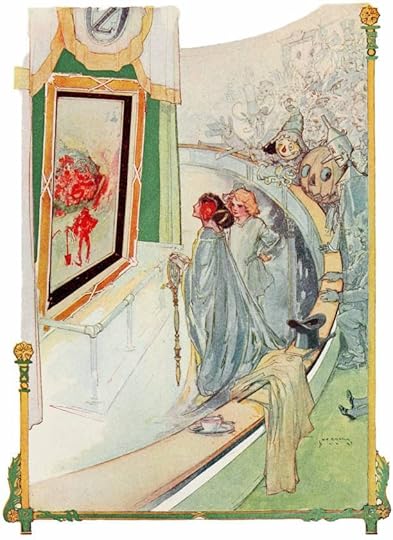
Meanwhile, Dorothy and her friends get to enjoy some milder adventures. We meet the Rigmaroles and the Flutterbudgets, personality types you might have known in real life, here given a place to indulge their particular idiosyncrasy without harming others, and in Bunnybury, Dorothy manages to show up a rabbit ruler’s hypocrisy. I’m not sure what to make of her adventure in Bunbury, where she ends up indignant that the inhabitants didn’t let her eat them. Perhaps a surfeit of puns, which are especially abundant in this section, blunt one’s moral sense.
The climax reveals another side of the Oz ethos, pacifism, as Ozma refuses to fight the evil forces invading her country. Instead, death enters from an oblique source (the waters of Lethe, I think, must be connected to the Emerald City’s Forbidden Fountain) and reveals its salvific side. And though in his conclusion, Baum tried to make Oz as inaccessible as death’s undiscovered country, the doors would soon be opened again. I’m very glad they were, for there was still much more amusement and adventure to come.
This completes the first stage of the Ozathon, but watch for an announcement at the beginning of next month about how the readalong will continue.
May 18, 2024
10 Books of Summer
Last year I participated in the 20 / 15 / 10 Books of Summer challenge hosted by 746 Books and it was a great success for me, so I’m joining again. I used the opportunity to cross-reference other challenges or reading goals, and I’ll take that approach this time too. I’m going to list specific books but I might swap some titles, while trying to still meet those challenges!
 Grimbold’s Other World by Nicholas Stuart Gray for Reading the MeowThe Brain that Changes Itself by Norman Doidge for Nonfiction ReaderSavor by Fatima Ali for Nonfiction ReaderAll the Beauty in the World by Patrick Bringley for Nonfiction ReaderMomo by Michael Ende for Summer in Other LanguagesMadame Bovary by Gustave Flaubert for Summer in Other LanguagesEva Luna by Isabel Allende for StoryGraph Reads the WorldRunning in the Family by Michael Ondaatje for StoryGraph Reads the WorldWell That Was Unexpected by Jesse Q Suntano for StoryGraph Reads the World
Grimbold’s Other World by Nicholas Stuart Gray for Reading the MeowThe Brain that Changes Itself by Norman Doidge for Nonfiction ReaderSavor by Fatima Ali for Nonfiction ReaderAll the Beauty in the World by Patrick Bringley for Nonfiction ReaderMomo by Michael Ende for Summer in Other LanguagesMadame Bovary by Gustave Flaubert for Summer in Other LanguagesEva Luna by Isabel Allende for StoryGraph Reads the WorldRunning in the Family by Michael Ondaatje for StoryGraph Reads the WorldWell That Was Unexpected by Jesse Q Suntano for StoryGraph Reads the WorldSummer in Other Languages is my personal challenge to read more books in languages other than my native tongue (French and German, in my case). It’s a very casual thing, but feel free to join in!
For the last few years I’ve gotten to do a buddy/group read in French with Emma of Words and Peace, and that’s been extremely helpful in keeping me motivated with that language. Last year I mentioned to her my ambition to finally read Madame Bovary in the original, and I hope we’ll get to read together again. If anyone wants to join, let me know. Naturally, you are welcome to read in translation, too, but if Emma sets up a discussion group again it will be in French.
Do you have plans for your summer reading? Any particular countries or languages you want to visit?




